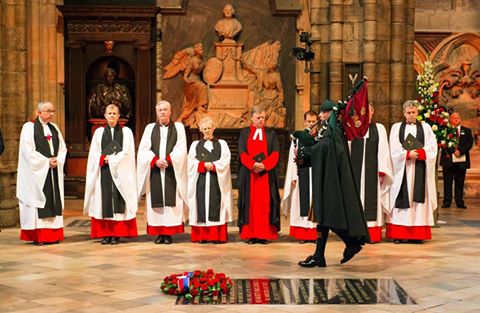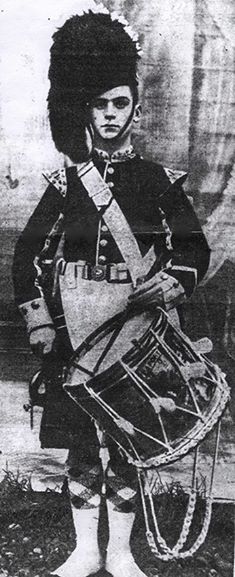The Grand Lodge of Antient Free and Accepted Masons of Scotland
THE SOMME – 1916
This morning at 7.30 am the ‘One O’clock Gun’ at Edinburgh fired a single shot to mark to the minute one hundred years ago that the Battle of the Somme began and to begin a two minute silence in memory of those who fell.
The British Army suffered almost 60,000 casualties on the first day alone and more than a million men would be killed or wounded on both sides over the course of the 141-day offensive.
Scottish Regiments took part. They were:
2nd Seaforth Highlanders 1st King’s Own Scottish Borderers The Highland Light Infantry (15th, 16th and 17th regiments) 2nd Cameronians 2nd Gordon Highlanders 2nd Battalion the Royal Scots Fusiliers
Needless to say there were a large number of Scottish Freemasons in those regiments and in fact most of those regiments had a Lodge at one time or another. For example:
Lodge Gordon’s No. 589, Founded 1876 Lodge Queens Edinburgh Rifles, No. 1253, Founded 1921 Lodge Seaforth, No.854, Founded 1897
One individual will serve as a representative for all Scottish Freemasons:
DRUM-MAJOR WALTER POTTER RITCHIE, VC, 2nd Battalion, Seaforth Highlanders
He was born at Hopehill Road, Glasgow on 27 March 1892. He was the second son Walter Ritchie, an Ornamental Iron Fitter and Blacksmith, and Helen Monteith Ritchie, of 35 Raglan Street, Glasgow. His siblings were Janet, Arthur, Elizabeth and Thomas.
He was a religious boy and a keen member of the Tron Episcopal Church in Glasgow, as well as being a member of the local Boy’s Brigade. After his schooling he started an apprenticeship as a Blacksmith. This did not last very long, however, and, even though he was underage, he decided to join the army. He enlisted as a Drummer in the 8th Battalion, Scottish Rifles and then transferred to the 2nd Battalion The Seaforth Highlanders in August 1908 although still only sixteen years of age. Like many others, he ‘forgot’ his real age, (sixteen) when he enlisted.
His parents tried to make him leave The Seaforth Highlanders, but he ‘was adamant, “I want to be a soldier.”‘
Ritchie was posted with the 2nd Battalion, The Seaforth Highlanders to Shorncliffe, Kent, and Fort George near Inverness, and at the outbreak of war the battalion was one of the first to land on French soil in August of 1914. They saw action on the retreat from Mons at the Battle of Le Cateau and were also involved at the Battles of the Marne, Aisne, Messines and Armentières, where he received the head wound that hospitalised him in October. The battalion also observed the famous British/German Christmas truce of 1914, and endured the Second Battle of Ypres in 1915. On the eve of the Somme offensive, Walter and the 2nd Seaforths were positioned in reserve trenches as they were not to go forward in the first wave of the attack.
Just after 7.30 that morning the Hampshire and East Lancs regiments moved off for the attack up to the Redan Ridge. At 9.00 it was the turn of the 2nd Seaforths and as they pushed forward the war diary records “heavy machine gun fire from the ridge and the direction of Beaumont Hamel.” They managed to reach the third line of German trenches, but by now numbers had been decimated and men cut down in swathes. By midday, shortages of munitions forced a disorganised British retreat to a stronghold called ‘The Quadrilateral’. Ritchie had been wounded in the knee, but an interviewer put it, ‘he raced through the Germans’ deadly machinegun fusillade and, mounting the enemy parapet on his own initiative, sounded the charge on his drum [incorrect; he used a bugle] … exposed [to firing] from all sides’. This helped to rally the melee of men of many units who were by now wavering and starting to retire as most of them had lost their units and commanders.
Throughout that long July day Walter continued to show the greatest devotion to duty carrying messages back and forth over the fire swept battlefield. As a result of his actions on that day Walter Potter Ritchie was awarded the Victoria Cross, which was presented to him personally by the King at Buckingham Palace on 25 November 1916.
The citation read, “On 1 July 1916 north of Beaumont Hamel, France, Drummer Ritchie, on his own initiative, stood on the parapet of an enemy trench and, under heavy machine-gun fire and bomb attacks, repeatedly sounded the ‘Charge’ thereby rallying many men of various units who, having lost their leaders were wavering and beginning to retire. He also, during the day, carried messages over fire-swept ground”.
Many awards and decorations were bestowed on brave young men that day, but nine of them would be singled out for the ultimate accolade for outstanding deeds of gallantry in the presence of the enemy, the Victoria Cross.
Only three of these nine gallant men survived the carnage of July 1st to be presented with their medals in person. The other six gave their lives and still lie out on the Somme battlefield. Walter was one of the lucky ones to survive the Great War despite being gassed twice and wounded on two other separate occasions. He was also honoured by a grateful French nation being awarded the Croix de Guerre. He later achieved the rank of Drum Major. The Glasgow Herald reported: ‘Drummer Walter Ritchie, Seaforth Highlanders, has brought fresh honour to his native city of Glasgow by winning the Victoria Cross … in addition [he] has also won the French Military Cross [Croix de Guerre]’. The Scotsman added: ‘There is every possibility that the ‘Charge’ sounded so valorously on the crest of an enemy parapet … rung out from a German bugle [which] he vowed he would take … with him everywhere’. By 1915, Ritchie’s father had become the caretaker of the Canal Boatmen’s Institute in Port Dundas, Glasgow. This was a social centre for Forth and Clyde Canal workers, designed by architect John Keppie assisted by another of Glasgow’s famous sons, Charles Rennie Mackintosh, and the Ritchies had a flat within the building. It was here that journalists broke the news of Ritchie’s award to his proud parents.’Like a bombshell’, Mrs Helen Ritchie made ‘the chance remark that Walter had been court-martialled’, for dropping and losing his drum in action, and picking up a rifle, although Mrs Ritchie assured the press that the reprimand was only a formality. ‘He later restored the balance by wresting a bugle from a German’. At his homecoming after receiving his VC at Buckingham Palace, in November 1916, he was characteristically reticent about his bravery. Members of the Canal Boatmen’s Institute, Port Dundas, however, celebrated by presenting him with a gold watch and £23, a considerable sum, while Port Dundas’s Roll of Honour was also unveiled.
He disregarded regulations, and ‘ignore[d] the ruling that musicians should not take their instruments into the trenches … Later he commented that had things gone the other way, he would have been court-martialled, not decorated’. Ritchie’s VC bugle was later presented to The Seaforths, and is now in The Highlanders’ Museum (Queens Own Highlanders Collection), Fort George, Ardersier.
Ritchie’s two brothers also joined the forces; electrician Thomas J Ritchie served with The Lovat Scouts, attached to various units in Salonika (Greece), and France. When he emigrated and wished to join the Canadian army in 1934, he mentioned Walter’s name to help his case. Arthur Ritchie, a skilled metal-turner with five children, spent the war at home working both at G & J Weir’s munitions foundry in Cathcart, and in The Royal Garrison Artillery in England. Walter Ritchie married local woman Mary McLagan in Cromarty, in 1919, and was posted to The Seaforths’ 1st Battalion in Belfast in 1921. He eventually retired, as a Drum Major, in 1929, after which he became a school attendance officer for the Education Department of Glasgow City Council. He rejoined a Territorial unit of the Royal Army Ordnance Corps as a senior non-commissioned officer during the Second World War, and worked in a Glasgow recruiting office.
In 1920 Walter attended a garden party given by a grateful King George V at Buckingham Palace and on November 11th of that year proudly stood as one of the “VC Guard” at the interment of the unknown warrior in Westminster Abbey. In November 1929 a reunion dinner for VC holders was held at the House of Lords, which Walter attended.
His final encounter with royalty came in June 1956 when, to commemorate 100 years of the Victoria Cross, Her Majesty Queen Elizabeth held a centenary review of VC holders at Hyde Park in London.
Walter Ritchie latterly lived in Edinburgh, where he died in 1965, and was cremated at Warriston Crematorium. Unlike so many VC winners, Walter Ritchie’s award is not held by the family or a regimental museum but has passed into private hands after being sold at auction. In 1970, it was reported that medal-dealers Spinks had purchased his Victoria Cross at auction for £1,700, considered a high price at the time, and it was later resold in Australia in 1981.
The bugle that he used to sound ‘The Charge’ is now at the Queens Own Highlanders Museum.
Brother Ritchie was a member of Lodge Govandale, No.1222.


[box type=””info”” style=””rounded”” border=””full””]For more information about Freemasonry in Scotland visit http://www.grandlodgescotland.com/
For Membership Enquiries email [email protected][/box]
